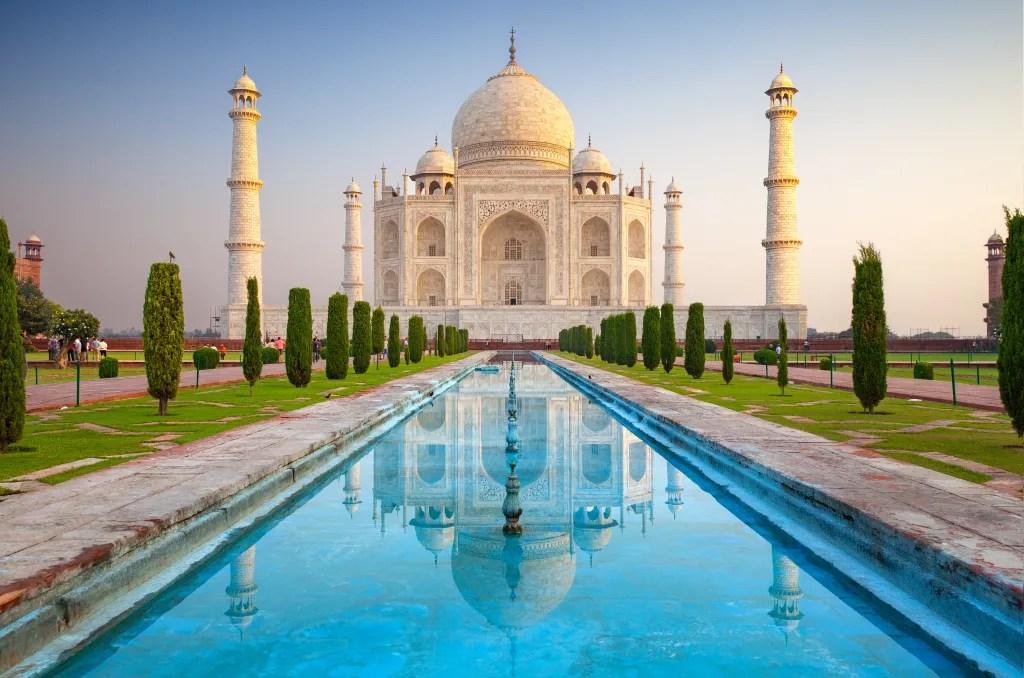The Taj Mahal: A Marvel of History and Architecture

Introduction
The Taj Mahal, a stunning architectural masterpiece located in Agra, India, is widely regarded as one of the most beautiful buildings in the world. Built between 1632 and 1648 by Mughal Emperor Shah Jahan in memory of his beloved wife, Mumtaz Mahal, this UNESCO World Heritage Site attracts millions of visitors each year. Its significance goes beyond aesthetics; the Taj Mahal embodies the rich history of the Mughal Empire and remains a symbol of eternal love.
Architecture and Design
The Taj Mahal is celebrated for its exquisite marble façade, intricate carvings, and remarkable symmetry. The central dome, rising to 35 meters, is surrounded by four smaller domes and is complemented by lush gardens and reflecting pools, creating a tranquil environment. The use of white marble, which changes hues with the shifting sunlight, adds to its ethereal quality. It is estimated that over 20,000 artisans contributed to the construction, showcasing the advanced architectural skills of the time.
Preservation Efforts
Despite its grandeur, the Taj Mahal has faced several challenges in recent years, including environmental pollution, which has led to discoloration of the marble. The Indian Government, along with various organisations, has initiated preservation efforts to protect this iconic structure. In 2023, significant restoration works were reported, focusing on cleaning the marble and revitalising the surrounding gardens. These efforts highlight the importance of maintaining cultural heritage amid modern industrial challenges.
Tourism Impact
As one of the most visited tourist attractions in the world, the Taj Mahal plays a crucial role in India’s tourism sector. In 2019, it attracted approximately 7-8 million visitors, significantly contributing to the local economy. However, the COVID-19 pandemic saw a steep decline in tourist numbers. With the gradual reopening of borders and vaccination drives, tourist numbers are expected to rise, emphasizing the need for sustainable tourism practices that protect both the site and its surroundings.
Conclusion
The Taj Mahal remains a testament to love and artistic achievement, drawing people from all corners of the globe. Its architectural beauty and rich historical narrative continue to inspire and evoke wonder. As we look to the future, ongoing preservation efforts and sustainable tourism practices are vital to ensure that this magnificent symbol of love remains a cherished global heritage site for generations to come.
